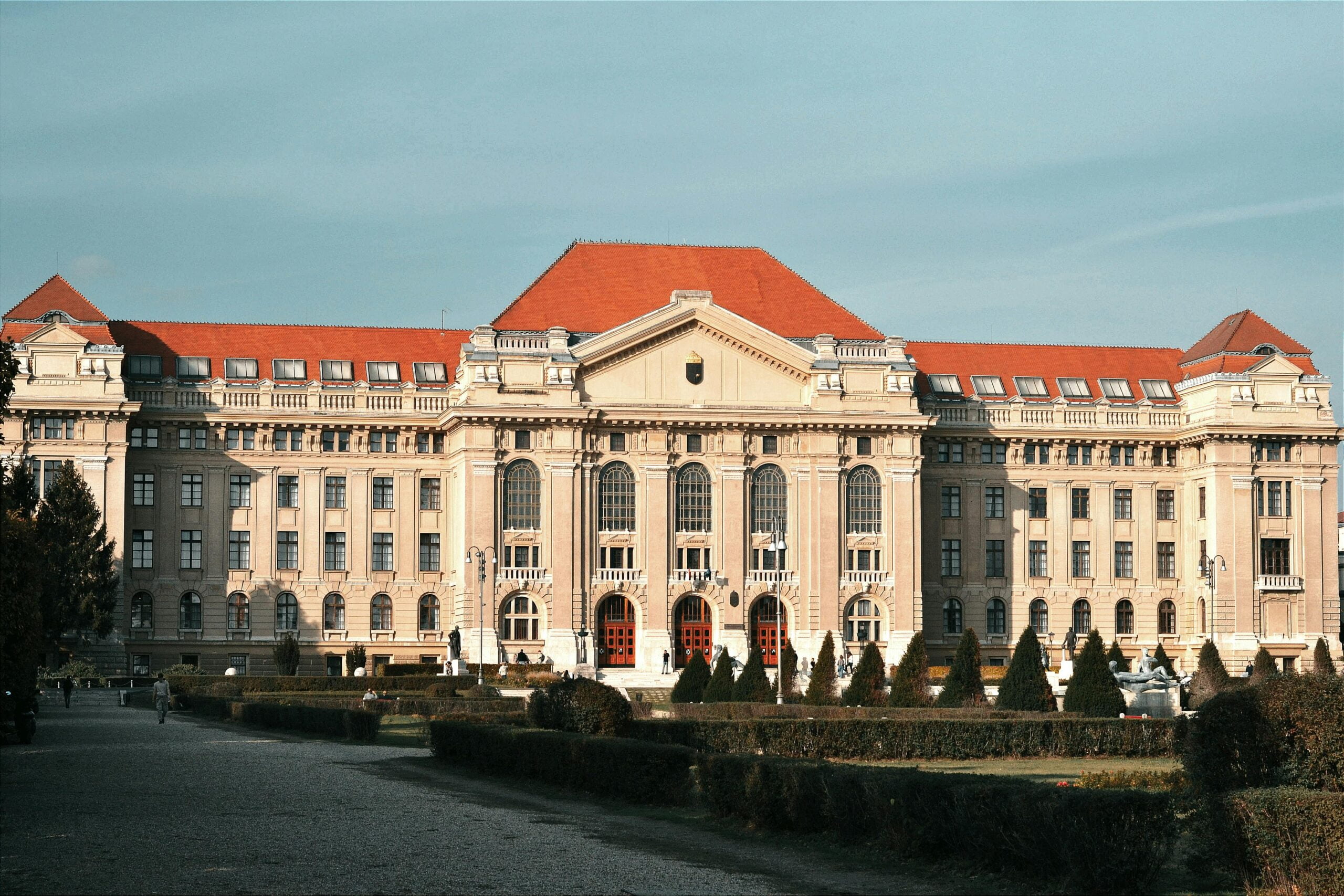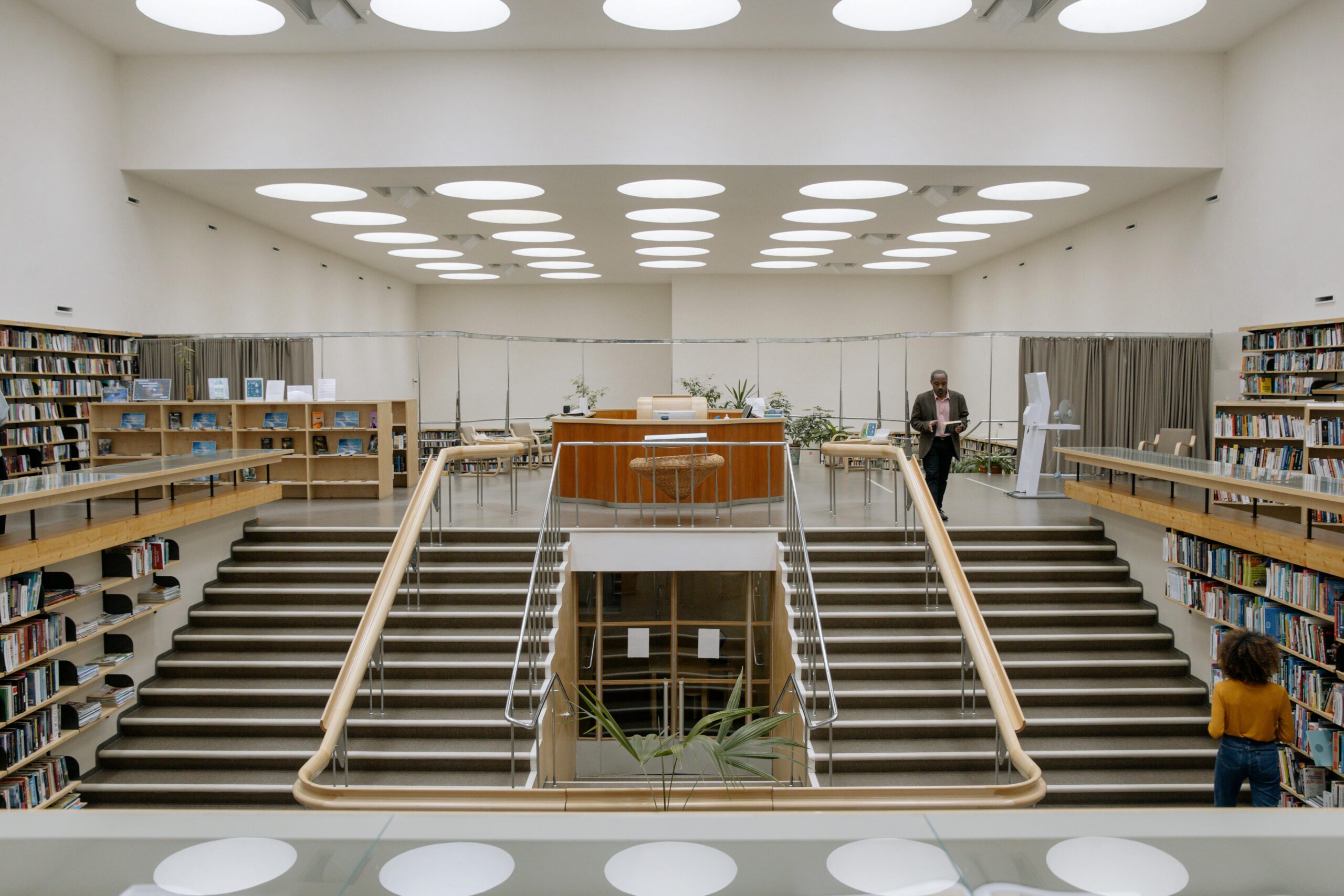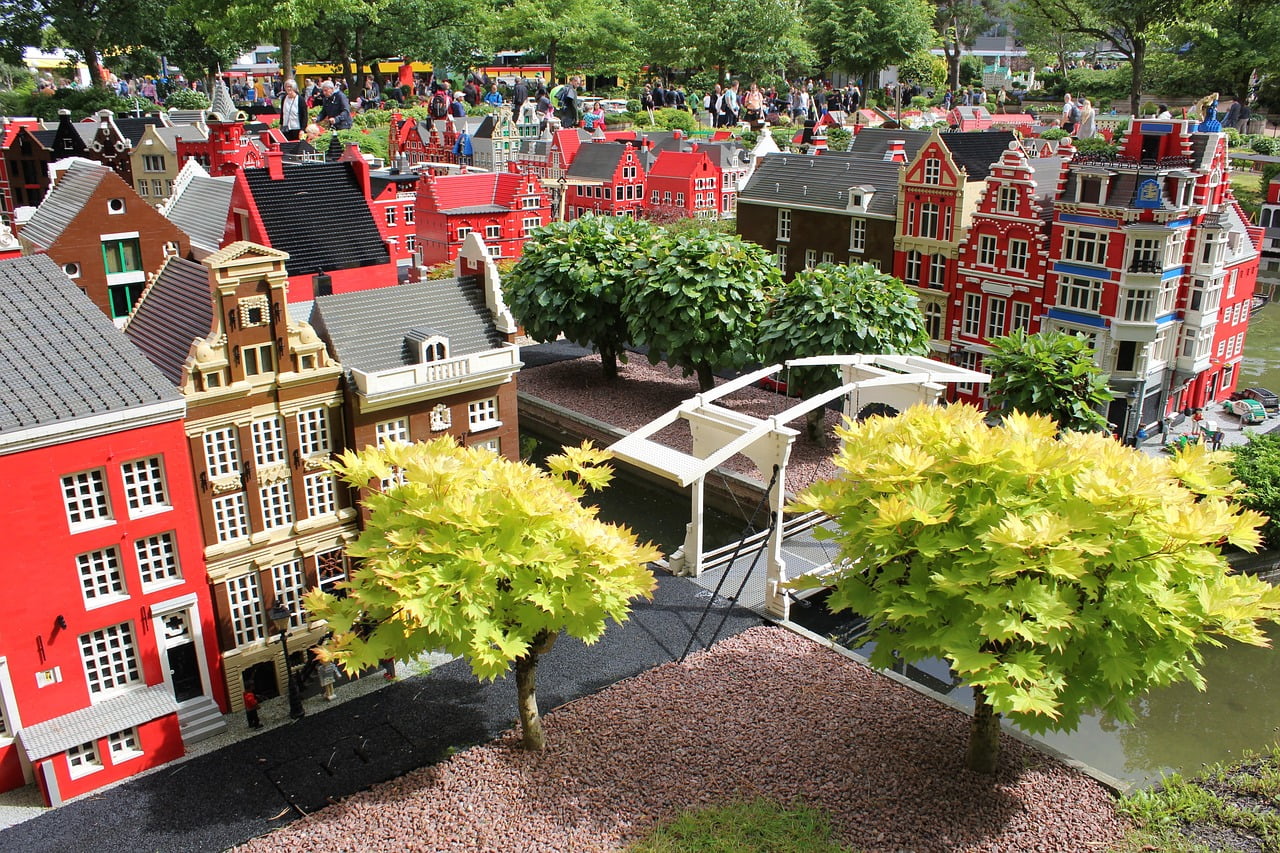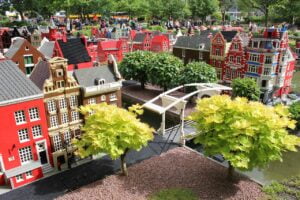What is deconstructivism in architecture?
Everyone knows that architecture has been a conservative discipline since the beginning of time. It demands order, stability, function, and logic, but deconstructivism moves away from these constructing rules. It doesn’t have any affection for “form follows function”, “purity of form”, or “truth of materials”. [1] [3] It’s a non-linear architectural style and defiance in the face of symmetrical shapes that projects the creation of massive buildings with a unique design and visual appearance. Let’s give some thought to what deconstructivism is…
Deconstructivism is a word made by blending the two words “Constructivism” and “Deconstruction” together. Deconstructivism in architecture is a postmodern architectural movement that emerged in the late 20th century. It means breaking down or demolishing the constructed structure. It is commonly characterized by the absence of harmony, balance, rhythm, symmetry, etc. [2] The style often features fragmented forms, angular geometries, non-linear shapes, and an overall sense of disarray or chaos.
Deconstructivist buildings challenge the traditional notions of symmetry, balance, consistency, and ideas of harmony, seeking to disrupt the conventional understanding of space and form.
History
The concept of deconstructivism was created by the French philosopher Jacques Derrida in the 1960s. The 1982 Parc de la Villette design competition in Paris and the MoMA’s 1988 Deconstructivists Architecture Exhibition in New York, organized by Philip Johnson and Mark Wiley, brought it to the attention of the globe and reached broader audience. This exhibition also showcased various architects connected to this movement, including Frank Gehry, Zaha Hadid, and Daniel Libeskind. This campaign has had the biggest influence on the architecture since it first appeared to the audience. It ended the predestined thinking about the ideas of form, function, and structure. [5]
Philosophy
Postmodernism, which originated in the 1960s as a response against modernism’s formality, emerged with deconstructivism but was separate from it. While both ideologies shared a combative, confrontational attitude towards modernism’s order, purity, and reason, deconstructivist architects rejected the architectural history that postmodernists enthusiastically embraced.
Deconstructivism sprung from the philosophical theories of deconstruction from French philosopher Jacque Deida, who suggested a radical rethinking of tradition. Deconstructivist architects attempted to translate their ideas and principles by dramatically altering or blatantly rejecting age-old architectural forms and spaces. They called into question the shapes and structures of buildings in favor of a design that creates a sense of movement while provoking strong emotions. These efforts have manifested themselves in structures marked by paradoxes, fragmentation, distortion, rejection of symmetry, linearity continuity, and a fundamental departure from form, function, and relationship. Thumb architects like the legendary Frank O. Garry focused on deconstructing dual concepts such as function and structure, beauty and ugliness, and interior and exterior. [1]
Some Deconstructivists were also influenced by Russian constructivism’s formal experimentation and geometric imbalances. [2]
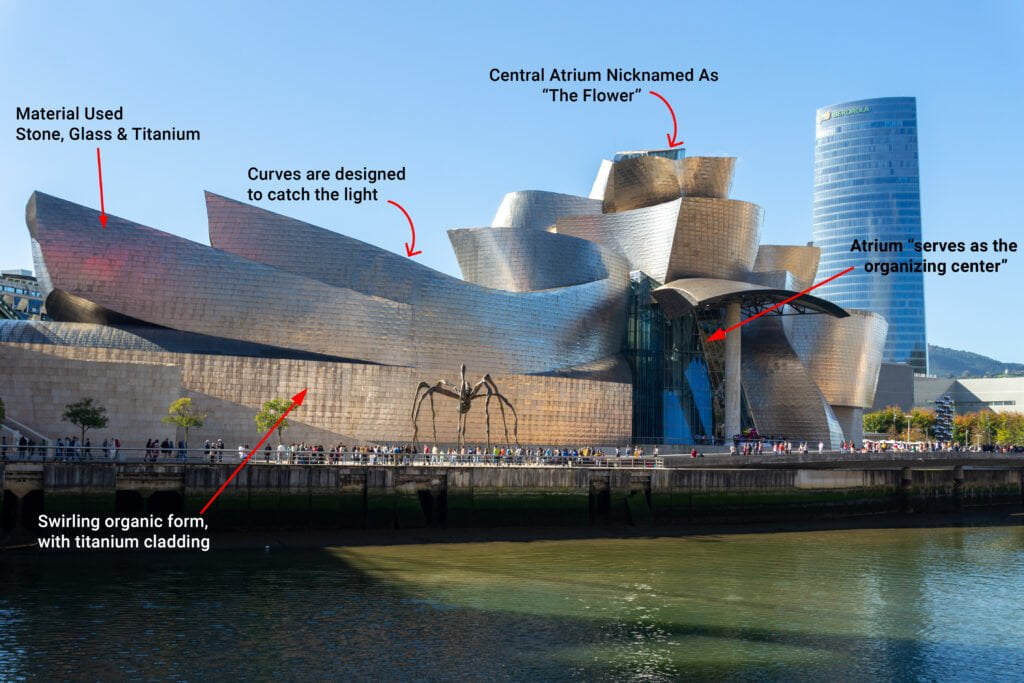
Inspiration
Besides deconstruction philosophy, architects also found inspiration in other art movements, particularly Russian constructivism, futurism, analytical cubism expressionism, abstract expressionism, and post-modernism, which all showed tendencies towards the radical treatment of form and perspectives. Technology and architectural software programmes have enabled deconstructivist architects to release their creativity and transmit their unconventional message through uncommon buildings. Some have accused the movement of being inhumane and elitist. Despite that, the style gained institutional support and social acceptance over time, and it seems that it will not go out of fashion anytime soon. Architects all around the world are still being inspired by deconstructionism as they plan and create the structures of the future. It may well be fashion, but one thing is for sure: deconstructivist architects have changed the course of architecture forever.
Characteristics and Features
- The finished building appears unstable and confusing, lacking any visual logic and having conflicting abstract forms.
- It has risky, perplexing forms that challenge the visitors. [1]
- Plain and smooth exterior surfaces.
- Exposed materials
- Simple metal frame doors.
- Window frames are often hidden in the walls. [3]
- The style often features fragmented forms, angular geometries, non-linear shapes, and an overall sense of disarray or chaos.
- Fragmented Volumes
- Rejection of symmetry and Euclidian geometry
- Lack of harmony, linear form, and continuity in design
- No use of right angles.
- Use of noble and relatively light materials. [6]
Deconstructive Architects
A deconstructive architect is not one who dismantles buildings, but one who locates the inherent dilemmas within buildings. The deconstructive architect puts the pure forms of the architectural tradition on the couch and identifies the symptoms of a repressed impurity. They challenge gravity with their deformed shapes and designs. The impurity is drawn to the surface by a combination of gentle coaxing and violent torture: the form is interrogated. [4]
Deconstructivism wasn’t a radical new movement, but a concept of architecture shared and practiced by forward-thinking professionals worldwide. Namely, Peter Eisenman, Bernard Tschumi, Frank O. Garry, REM Koolhaas, Daniel Libeskind, Coop Himmelb(l)au, and Zaha Hadid, among others, were called Deconstructivists architects, although many of them rejected the label. [1] [2]
Numerous famous works by these architects include the Guggenheim Museum in Bilbao, designed by Frank O. Gehry; the Heydar Aliyev Cultural Center in Azerbaijan, designed by Zaha Hadid; the Jewish Museum in Berlin, designed by Daniel Libeskind; and many other works by these architects. Zaha Hadid has many buildings in her name that reflect this kind of style. [6]
Characteristics of Deconstructive Architects
- Playfulness and Humor
- Emphasis on Interior Space
- Deconstruction of Traditional Forms
- Industrial Materials
- Asymmetry
- Fragmentation and Distortion
Materials
Deconstructivist architecture embraces experimentation with materials, often using unconventional combinations and applications to create visually striking and conceptually rich buildings. While there is no definitive list of materials exclusive to deconstructivism, the movement’s focus on fragmentation, asymmetry, and spatial complexity has led to the exploration of various materials.
Criticism
Architecture is all about experimenting and searching for new concepts and ideas. The opinions of some people can vary in some situations, but they may benefit someone. Deconstructivism can be criticized by some critics for these possible reasons:
- Lack of Functionality
- Disconnection from Context
- Structural Complexity and Cost
- Accessibility Issues
- Aesthetic Overload
Conclusion
It will remain an influential movement that encouraged architects to design buildings that will challenge the generation and create visually appealing buildings. It was made to push boundaries, free ourselves from any kind of constraint, and create a structure that will question our perception of shape and form. This kind of style is still filled with various design explorations and ideas to create marvelous and amazing designs.
With the use of modern technologies for precise 3D modeling, rich material details, and complicated geometry options, architects and designers may develop parametric buildings like no other. Computational design and BIM will play crucial roles in making these kinds of structures. BIM has the power to generate precise 3D models, simulate design alternatives, and assess their impact by studying various aspects. Software can create complicated design patterns and decorative features that combine traditional beauty with efficiency. [5]
Examples of deconstructivism are:
- Dancing House, Prague.
- Imperial War Museum, Manchester.
- Guggenheim Museum, Bilbao.
- Jewish Museum, Berlin.
- Walt Disney Concert Hall, Los Angeles.
To read a case study on Walt Disney Concert Hall that is designed with deconstructivism style, click here



